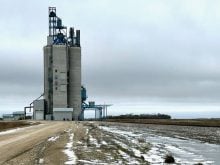When a director of a farm commodity group loses interest in the crop, it’s rarely a positive sign.
Bryan Vail, a director with the Great Plains Canola Association, which represents producers in Oklahoma, Kansas and Texas, hasn’t grown canola for a couple of years.
Vail, who farms in Apache, Okla., southwest of Oklahoma City, used to seed canola when it was selling for $10 to $15 per bushel.
Now that the price is around $7.50 per bu., canola doesn’t make economic sense on his farm.
Read Also

Farmland ownership fires up Saskatchewan politicians
Saskatchewan politicians debate the enforcement of farmland ownership laws in the province.
“It’s a pretty high input crop. And a lot of work goes into it,” he said. “If it isn’t any better than the wheat price, I’m not going to (grow) it.”
Vail isn’t alone in his apathy. Dozens of Oklahoma growers have backed away from canola in the last couple of years.
In the fall of 2013 farmers in the state seeded 250,000 acres of winter canola and the industry was flush with optimism. Northstar Agri Industries was planning to build a canola crushing plant in Enid and many were predicting acres would hit one million by 2020.
Two years later, Oklahoma’s Cinderella crop has lost its sparkle.
Northstar has cancelled plans to build the crushing plant and a co-operative oil mill in Oklahoma City announced it is relocating and will no longer crush canola seed.
A persistent drought hammered canola yields in the spring of 2014 and prevented many farmers from seeding in the fall of 2014. Adding to the misery, the massive Canadian crop of 2013 cut sharply into canola prices.
Consequently, Oklahoma farmers planted 150,000 acres in 2014.
Josh Bushong, winter canola extension specialist with Oklahoma State University, said crop insurance is also a challenge. Only 11 of the 77 counties in the state offer program crop insurance for winter canola.
“All other counties… they (farmers) have to apply by written agreement,” he said. “If they don’t have a lot of canola history, it (insurance) is based off a similar crop like wheat. (If) their wheat yields are low… they don’t get a good guarantee on their canola insurance.”
Northstar Agri needed about 500,000 acres to support the proposed plant. When acres went south the company abandoned the project.
“I know it sounds bad not getting the crusher (in Enid) and losing the crusher in Oklahoma City, but there are still enough buyers… that it’s not going to affect the producer much,” Bushong said.
“We still have plenty of local markets. Mostly grain elevators…. (They are) buying the crop and mostly selling to ADM at Goodland, Kansas, and Lubbock, Texas.”
Jeff Scott, Great Plains Canola Association president, said canola will survive the temporary downturn.
He told The Oklahoman that farmers need a rotation crop for wheat and canola is the best option.
“It makes my farm more profitable. I’ve tried soybean and milo as a rotation crop, but nothing is like canola.”
Bushong said Oklahoma’s wheat industry supports canola because it offers agronomics benefits for winter wheat. The oilseed helps control weeds and boosts yield in the subsequent wheat crop.
Bushong said canola yields were decent this spring and he’s hopeful that seeded acreage rebounds this fall.
He said a million acres remains the goal, but the timeline has changed.
“It might take 10 to 12 years, instead of five to 10 like we were originally hoping for,” he said.
“The optimism is still there. Producers are still interested in the crop.
















